
First
and Only Weekly Online Fanzine Devoted to the Life & Works of Edgar
Rice Burroughs
Since
1996 ~ Over 10,000 Web Pages in Archive
Volume
2004

First
and Only Weekly Online Fanzine Devoted to the Life & Works of Edgar
Rice Burroughs
Since
1996 ~ Over 10,000 Web Pages in Archive
Volume
2004
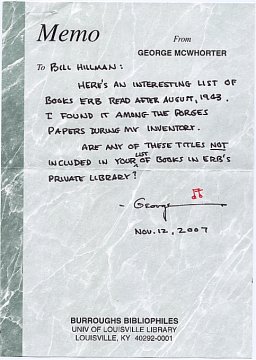 |
EDGAR RICE BURROUGHS FROM 1943 An Addendum to the ERB Library Project www.ERBzine.com/dan Found by George McWhorter
"A few of the books I read from Aug 1943
|
| LoBagola |
| Autobiography of Bata Kindai Amgoza Ibn LoBagola, a Negro.
Knopf ~1933 The autobiography of Bata Kindai Amgoza Ibn Lobagola a Black Jew, descended from the Lost Tribes of Israel, a Savage who came out of the African Bush into Modern Civilization and thenceforth found himself an alien among his own people and a stranger in the Twentieth Century World. 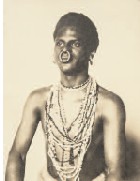 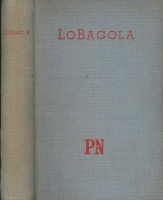 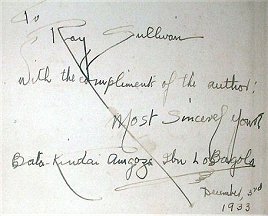 |
|
| Hanson W. Baldwin |
| The Caissons Roll: "A Military Survey of Europe" ~ NY, Alfred
A. Knopf. 1938 323pp
Interesting study of the state and strength of the European nations and Russia just prior to WW II Baldwin was Military and Naval Correspondent of the New York "Times" Some Strategic Aspects of the War in 1940 Excerpt
from TIME Magazine Archive ~ Monday, Nov. 09, 1942
Making of an Expert. Before September 1939, Hanson Baldwin had accumulated a solid reputation for sound reporting of naval affairs. Then he included the Army in his field. He wrote books (United We Stand, Strategy for Victory, The Caissons Roll, Admiral Death, What the Citizen Should Know About the Navy). After Dec. 7, he wrote a column of signed comment. His reputation grew. Day after day, week after week, he sat in his cramped, cluttered office in New York and wrote about the Navy, the Army and the war. Occasionally he had a week or so at Army posts, or on a warship, living the life he knew when he was at Annapolis and a junior officer in the Navy (1924-27). But he was restless. He wanted to see the war. Last August he set off on a tour of Hawaii, Palmyra, the Fijis, the New Hebrides, New Caledonia, the Solomons. When he returned, he wrote eight analytical reports. By last week, when the Times published the final installment, Hanson Baldwin's stature as a military reporter and critic had enormously increased. Disaster at Savo. Reporter Baldwin gave the blackest account yet printed of the naval disaster Aug. 9, in which three U.S. cruisers and one Australian cruiser were sunk (TIME, Oct. 19). "The Astoria, Quincy, Vincennes and Canberra . . . were surprised like sitting ducks; none of them had a chance to get off more than a few ineffectual salvos . . . despite the fact that one of our planes [had reported] the approach of the Japanese cruisers the afternoon prior to the night action. . . . They [the U.S. cruisers] had assumed a defensive position, patrolling over a fixed course in narrow waters and awaiting the enemy instead of going out to attack him. . . . Their dispositions enabled the enemy to approach almost within gun range without detection. . . . Only a small part of their crews were at battle stations. . . . The admiral in command of the northern cruiser screen had left the scene in his flagship. . . . The loss was . .. unnecessary." Baldwin's account suggested that the blame for these and
other losses did not belong exclusively to Vice Admiral Robert L. Ghormley,
the area commander whom the Navy relieved last fortnight. Baldwin named
no names, but he implied that inept, overtimid, task-force commanders may
have been at least partly to blame. His major conclusion: "The Solomons
have clearly shown deficiencies—which stem from overcaution and the defensive
complex—that must be remedied. If mistakes continue, we can defeat ourselves."
More>>>
Obituary: New York Times Archive: November 14, 1991 Hanson W. Baldwin, retired military-affairs editor of The New York Times and the author of more than a dozen books on military and naval history and policy, died yesterday at his home in Roxbury, Conn. He was 88 years old. Mr. Baldwin died of heart failure, his family said. A graduate of the United States Naval Academy, Mr. Baldwin joined The Times in 1929 and won a Pulitzer Prize in 1943 for his World War II reporting from the Pacific. He was one of the nation's leading authorities on military and naval affairs during the postwar transition from conventional warfare to the nuclear age. A tall, slender, courtly man, Mr. Baldwin had a quiet manner that belied his forceful opinions. In addition to the European and Pacific battles of World War II, Mr. Baldwin covered the strategy, tactics and weapons of war in Korea, Vietnam, the Middle East and other theaters before retiring from The Times in 1968. His articles, many marked "military analysis," were often more than reportorial, blending his own opinions and those of the nation's military chiefs into the news of specific military situations, so that what emerged was a broader view of strategic considerations and their national and international political implications. Advocate of Nuclear Superiority Mr. Baldwin was often aligned with Pentagon military chiefs on major strategic issues and budgetary matters. He frequently opposed the "gradualism" of political leaders whose restraints, he felt, stood in the way of battlefield victories or military superiority for the United States. He contended that the United States was engaged in a "struggle for the world" with an aggressively expansionist Communism, and he was an outspoken advocate of nuclear superiority over the Soviet Union. At various times, he also advocated the intensification of the Vietnam War to achieve a military victory, and friendship with Spain under Franco and with white-dominated Governments in South Africa and in Rhodesia, now Zimbabwe, because of what he regarded as their strategic positions. Generals, admirals, Presidents and members of Congress read his articles, sometimes with respect and sometimes with exasperation. His views occasionally became the focus of news, as they did in 1966 when Defense Secretary Robert S. McNamara called a news conference to dispute his contention that the Vietnam War had overextended the armed forces. Opinions Angered Moscow The Times itself occasionally disagreed with his opinions. In 1965, for example, he argued in an article in The New York Times Magazine for a stepped-up American military commitment in Vietnam, including one million soldiers and saturation bombing of North Vietnam, to stop the "Communist strategy of creeping aggression" before it swallowed up all of Asia. In an editorial, The Times said such a policy would be "a surer road to global holocaust than to a 'victory' arms can never win for either side." Mr. Baldwin's opinions sometimes drew the wrath of the Soviet Union. Pravda once referred to him as a "cannibal in an American tunic," and Krokodil, a Soviet satirical magazine, published a cartoon depicting him as a fat little man in an admiral's hat seated in a puddle of ink and surveying the world through the wrong end of a telescope. After his retirement, Mr. Baldwin continued to write articles on military affairs for the news columns of The Times and its Op-Ed page. He also continued to write books and many magazine articles on strategic issues and intelligence matters, and served as president of the Naval Academy Alumni Association. Father an Editor Hanson
After three years of Navy service, much of it at sea aboard a destroyer and a battleship, Mr. Baldwin resigned his commission and began his newspaper career in 1927 as a reporter with The Baltimore Sun. Shifting to The New York Times two years later, he covered general assignments for eight years and became the paper's military analyst in 1937. That year, he spent four months in Europe, traveling in Germany, France, Britain and Poland to report on military preparedness for what was viewed as the coming war. When he returned, he reported extensively on the ill-prepared state of the American military establishment. After the outbreak of war, his dispatches from Guadalcanal and the Western Pacific won a Pulitzer Prize in 1943. Later, he covered the Allied invasion of North Africa and the D-day landings on the beaches of Normandy. A Prolific Writer
In 1959 he broke the news of high-altitude atomic bomb tests by the United States, known as Project Argus, after holding it for seven months because of what Washington contended were national security considerations. Besides his articles for The Times, Mr. Baldwin kept a heavy lecture schedule and wrote regularly for magazines, scholarly quarterlies and a variety of professional military publications. His family said his papers would be given to the Yale Library. His early books included "The Caissons Roll," a military survey of Europe (Knopf, 1938); "United We Stand" (McGraw-Hill, 1941); "Strategy for Victory" (Norton, 1942); "The Navy at War" (William Morrow, 1943); "The Price of Power" (The Council on Foreign Relations and Harper, 1947); "Great Mistakes of the War" (Harper, 1949); "Sea Fights and Shipwrecks" (Hanover House, Doubleday, 1955), and "The Great Arms Race" (Praeger, 1958). His later books included "World War I: An Outline History" (Harper & Row, 1962); "The New Navy" (Dutton, 1964); "Battles Lost and Won: Great Campaigns of World War II" (Harper & Row, 1966); "Strategy for Tomorrow" (Harper & Row, 1970); "The Crucial Years, 1939-1941" (Harper & Row, 1976), and "Tiger Jack" (Old Army Press, 1979). "Strategy for Tomorrow" advocated an "oceanic" strategy in which United States ground forces in Europe and Asia would be reduced and naval forces strengthened to deploy nuclear weapons and to make intervention in world trouble spots easier. Besides the Pulitzer Prize, Mr. Baldwin received many awards and prizes, including the Distinguished Service Medal from Syracuse University in 1944. He received honorary degrees from Drake University and the Clarkson Institute of Technology. Mr. Baldwin is survived by his wife, the former Helen Bruce, whom he married in 1931; two daughters, Barbara Potter of Woodbury, Conn., and Elizabeth Crabtree of Ridgewood, N.J.; seven grandchildren and three great-grandchildren. Funeral services will be private. |
| Harold Lloyd (1893-1971) with Wesley Winans Stout |
| American Comedy ~ 1928
"Harold Lloyd's autobiography. Swell." Full name, Harold Clayton Lloyd; born April 20, 1893, in Burchard, NE; died of prostate cancer, March 8, 1971, in Beverly Hills, CA; son of J. Darsie and Elizabeth (Fraser) Lloyd; married Mildred Davis (an actress), February 10, 1923 (died August 18, 1969); children: Gloria, Marjorie Elizabeth, Harold Jr. (an actor). 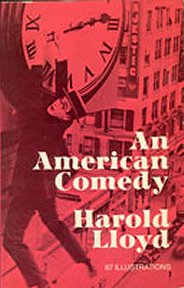 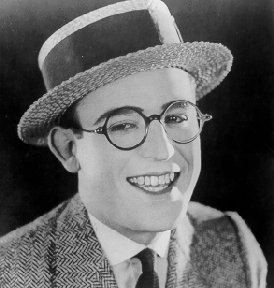 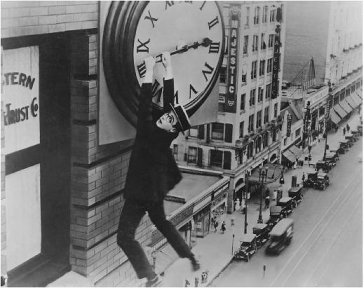 |
| Lorrin A. Thurston (1857–1931) |
The Foreign Language Schools ~ Nov 8 1920
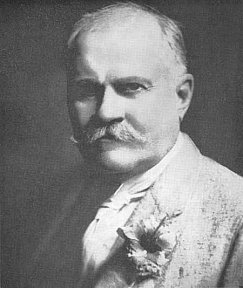
Lorrin A. Thurston, publisher of the Honolulu Advertiser, and the "Father of Hawaii National Park." Principally through his efforts, the Land of Pele was brought into the select family of the National Park System  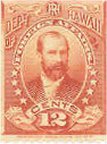 Lorrin Andrews Thurston
(1857–1931), was a lawyer born and raised in the Kingdom of Hawai'i who
published the Pacific Commercial Advertiser (forerunner of the present-day
Honolulu Advertiser). The child of missionaries to Hawai'i, Thurston played
a prominent role in the revolution that transformed Hawai'i from a monarchy
into a sovereign constitutional republic. Lorrin Andrews Thurston
(1857–1931), was a lawyer born and raised in the Kingdom of Hawai'i who
published the Pacific Commercial Advertiser (forerunner of the present-day
Honolulu Advertiser). The child of missionaries to Hawai'i, Thurston played
a prominent role in the revolution that transformed Hawai'i from a monarchy
into a sovereign constitutional republic.
The Provisional Government of Hawai'i was proclaimed on January 17, 1893 by the 13 member Committee of Safety under the leadership of Lorrin A. Thurston and Sanford B. Dole. It governed the Kingdom of Hawai'i after the overthrow of Queen Lili'uokalani until the Republic of Hawai'i was established on July 4, 1894.
President Grover Cleveland opposed the idea of annexation, being an
anti-imperialist himself, and withdrew the treaty negotiated by President
Benjamin Harrison upon taking office. After commissioning the secret Blount
Report, he stated that the U.S. had inappropriately used military force
and called for the reinstatement of Queen Lili'uokalani. The matter was
referred by Cleveland to Congress after Sanford Dole refused Cleveland's
demands, and the U.S. Senate held a further investigation, culminating
in the Morgan Report, which completely exonerated the U.S. from any involvement
in the overthrow. After the findings of this committee were submitted,
Cleveland reversed his position, and accepted the Provisional Government
as legitimate, and rebuffed further requests from the queen to interfere
in the matter.
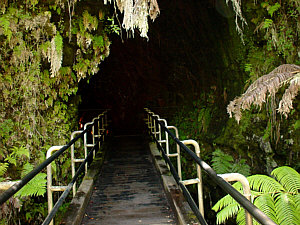 Lava
tubes are a common feature of the volcanic landscape in Hawaii. When a
lava-flow travels down the side of a mountain the surface of it cools but
the lava keeps on flowing underground through a self-made tube of volcanic
rock. The lava travels for longer than it would have done because the tube's
roof insulates the molten lava, keeping it fluid for longer. When the eruption
stops, lava drains out of the tube leaving a long, thin cave. The most
famous lava tube bears the name of its discoverer, Lorrin Andrews Thurston. Lava
tubes are a common feature of the volcanic landscape in Hawaii. When a
lava-flow travels down the side of a mountain the surface of it cools but
the lava keeps on flowing underground through a self-made tube of volcanic
rock. The lava travels for longer than it would have done because the tube's
roof insulates the molten lava, keeping it fluid for longer. When the eruption
stops, lava drains out of the tube leaving a long, thin cave. The most
famous lava tube bears the name of its discoverer, Lorrin Andrews Thurston.
Mr. Thurston drafted the constitution for the provisional Hawaiian government, put himself on the stamps, and headed the commission to Washington that negotiated for annexation. But he was also interested in preserving the remarkable geography of Hawaii. Most of the big island of Hawaii, for instance, is made up of a huge volcano called Mauna Loa. It's the biggest volcano in the world. Thurston campaigned for ten years to have the area on the Big Island with the active volcanos made into a national park... It became the USA's 13th national park in 1916.
|
| Kenneth Gandar Dower |
| The Spotted Lion ~ Little, Brown & Co., Boston ~ 1937 ~
331pp ~ photos & 1 fold-out map
"Swell" 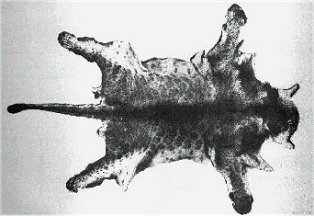
A Marozi Skin. This is 1 of the 2 specimens killed by Michael Trent in 1931. From The Spotted Lion Kenneth Gandar Dower was a well-to-do adventurer who wished to see Africa's wildlife with his own eyes: "Mine was not a promising situation when I found myself stranded in Nairobi. My only assets were a love of Rider Haggard and a vague half-knowledge of what I wished to do. I wanted to see big game in their natural surroundings, to take their photographs, and, once that was done, to fit myself to go alone into the great forests. I wanted to discover and to explore. Yet I could not speak Swahili. I had no fiends in Kenya. I had scarcely taken a still photograph (that had come out) or fired a rifle (except upon a range). My riding was limited to ten lessons, taken seventeen years previously when I was nine, on a horse which would barely canter. My shy suggestions of the possibilities of new animals brought only rather scornful jokes about the Naivasha Sea Serpent and the Nandi Bear."Dower teamed up with a farmer/guide/ unter named Raymond Hook, who became vital in the eventual search for the spotted lion. Dower's expeditions are described in The Spotted Lion. He touches on during his exploration and expeditions such items as the Nandi Bear, discovered species, black lynxes as well as the marozi. Three months after arriving in Africa Dower set off in search of the legendary animal he had heard of, and that his now friend Raymond Hook had said was "Rubbish":"This opportunity, given so undeservedly to a novice, who three months ago had never been to Africa or really ridden a horse or fired a rifle at a living thing, was almost too great a responsibility to bear. I felt small. Even with Raymond's help, how could I hope to find this rare animal, the very existence of which had for so long been unsuspected, in 2000 square miles of wilderness, through which we could hardly travel, to find it and track it down, and shoot it, or photograph it and capture it alive?"The expedition had failed in finding conclusive proof of the marozi, but the effect of the search did not fail. Dower is the single person to push the marozi to the attention of the world through the publication of articles in The Field and through his book, as well as the collection of anecdotal accountings from the natives. |
| John Buchan |
| Book of Escapes and Hurried Journeys
Houghton Mifflin Company, Cambridge University OR London: Thomas Nelson And Sons. 1922/1927 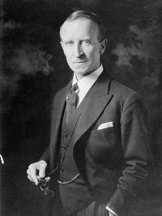
John Buchan Biography excerpts from BiographyBase.com |
| Field-Marshal Viscount Wolseley |
| Story of a Soldier's Life (Vol. 1)
New York: Scribner's, 1903. 2 vols. Two volumes. Photogravure portrait frontispiece to each, one folding map, a full-page plan and one illustration to the text. 398pp. OR Archibald Constable & Co. Ltd., 1903 An account of his career down to the close of the Ashanti War. 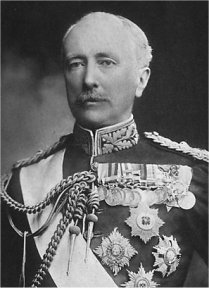 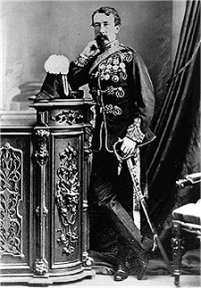 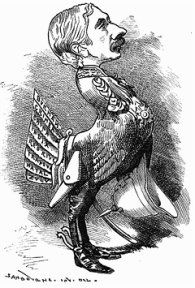 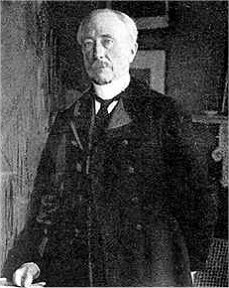 Wolseley (of Wolseley), Garnet Joseph Wolseley, 1st Viscount, Baron Wolseley of Cairo and of Wolseley. Born June 4, 1833 , Golden Bridge, County Dublin, Ireland. Died March 26, 1913 , Mentone, France. British field marshal who saw service in battles throughout the world and was instrumental in modernizing the British army. |
| Clifford Johnson |
| Pirate Junk Five Months Captivity with Manchurian Bandits
Intro: Peter Fleming. ~ New York, NY Charles Scribner's Sons 1934 ~ 8 B/W Photos, 1 Map ~ 238pp There is a 32-line note on the front end-paper by Arthur Calder-Marshall describing how he ghosted the book. Flemming was unaware of this. Recounts the story of four British officers kidnapped by Chinese pirates in 1933.  |
REVIEW: TIME Magazine Archives ~ Monday, July 16, 1934 |
|
ERBzine 2002 |
ERBzine 2003 |
ERBzine 2004 |
ERBzine 2005 |
ERBzine 2006 |
 |
 |
 |
 |
 |
 |
 |

WEBJED:
BILL HILLMAN
Visit
our thousands of other sites at:
BILL
AND SUE-ON HILLMAN ECLECTIC STUDIO
All
ERB Images© and Tarzan® are Copyright ERB, Inc.- All Rights Reserved.
All
Original Work ©1996-2008/2010 by Bill Hillman and/or Contributing
Authors/Owners
No
part of this web site may be reproduced without permission from the respective
owners.